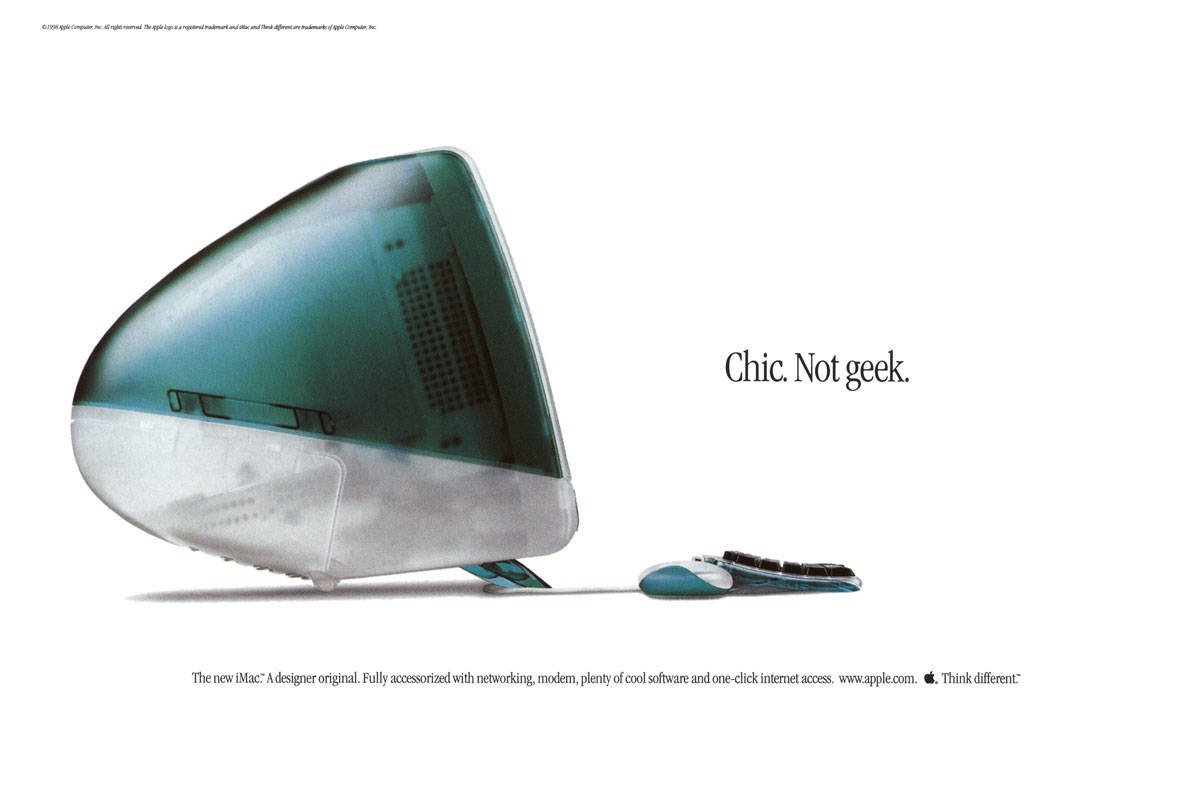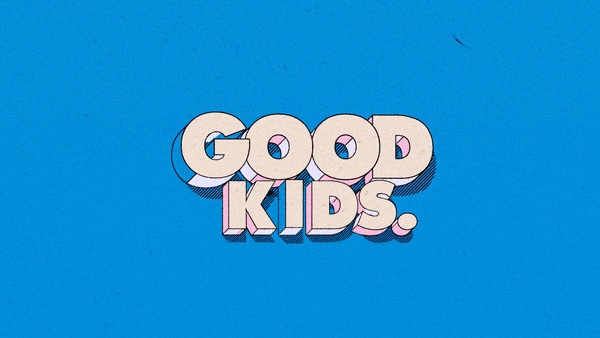What is a Brand Refresh? (And Why You Might Need One)
You have to keep your brand fresh and relevant to the ever-changing market to be able to attract new customers and keep an edge on the markets.
Being dynamic, trends and customer preferences change very often, so there might be a strategic need to refresh your Identity, Visuals, Messaging, or Positioning to get your Brand in market alignment.
A brand refresh involves dressing up your brand with a new look that is attractive, all while maintaining its inner values and core.
Key Points of Article:
A brand refresh updates a company’s identity, visuals, messaging, or positioning to stay relevant and competitive, keeping the core values intact.
Refreshes are needed to align with evolving market demands, stand out from competitors, reach new markets, update outdated images, or reflect business growth.
Successful refreshes involve reevaluating visual elements, refining messages, reassessing market positioning, and enhancing customer interactions to maintain brand consistency.
What is a Brand Refresh?
A brand refresh is a strategic update to a company's brand identity, visuals, messaging, or positioning. The goal is to stay relevant, attract new customers, and maintain a competitive edge in evolving market conditions. It involves enhancing the brand while preserving its core essence and values.
A brand refresh can encompass various elements, such as:
Visual identity: Updating logos, color palettes, typography, imagery, and other design elements to create a more modern, appealing look that resonates with the target audience.
Messaging and tone: Refining the brand's voice, messaging, and communication style to better connect with customers and convey the brand's unique value proposition.
Positioning and differentiation: Reevaluating the brand's market position and identifying opportunities to differentiate from competitors, align with changing customer needs, and capitalize on emerging trends.
A brand refresh is not a complete overhaul of the brand, but rather a strategic enhancement that builds upon the existing brand equity. It aims to revitalize the brand, making it more engaging, memorable, and relevant to the target audience, while staying true to the brand's core identity and values.
5 Reason Why Should Refresh Your Brand
Stay relevant in a dynamic market: As customer preferences and market trends evolve, your brand needs to keep pace to maintain its appeal and relevance. A brand refresh ensures that your brand remains fresh, modern, and aligned with the changing expectations of your target audience. By updating your visual identity, messaging, and positioning, you can effectively connect with your customers and stay top-of-mind in a competitive landscape.
Differentiate from competitors: Over time, your brand may start to blend in with the competition, making it harder to stand out and attract new customers. A brand refresh allows you to reevaluate your unique value proposition and identify opportunities to differentiate your brand from the rest. By refining your brand's personality, voice, and visual elements, you can create a more distinctive and memorable brand experience that sets you apart from the competition.
Expand into new markets or target audiences: As your business grows and evolves, you may need to expand into new markets or target different customer segments. A brand refresh can help you adapt your brand to resonate with these new audiences while still maintaining your core identity. By adjusting your messaging, visuals, and positioning, you can effectively communicate your value to new customers and establish a strong presence in new markets.
Revitalize a stagnant or outdated image: Over time, your brand may start to feel outdated or stagnant, leading to a decline in customer engagement and loyalty. A brand refresh can breathe new life into your brand, making it more vibrant, exciting, and relevant to your target audience. By updating your visual identity, messaging, and overall brand experience, you can reignite customer interest, boost engagement, and foster a stronger emotional connection with your brand.
Reflect business changes or growth: As your company evolves, your brand should reflect these changes. Whether you've expanded your product line, entered new markets, or undergone a significant shift in your business strategy, a brand refresh can help align your brand with your current reality. By updating your brand to reflect your growth and evolution, you can ensure that your brand remains authentic, credible, and representative of who you are as a company.
Key Elements of a Brand Refresh
A brand refresh involves strategic updates to various elements of your brand identity. These key components work together to create a cohesive, revitalized brand experience that resonates with your target audience and sets you apart from competitors.
Visual identity: Your brand's visual elements, such as your logo, color palette, typography, and imagery, play a crucial role in creating a strong, recognizable brand. During a refresh, these elements are updated to create a more modern, appealing look that aligns with your brand's personality and values. A refreshed visual identity can make your brand more memorable, engaging, and attractive to your target audience.
Brand voice and messaging: Your brand's voice and messaging are how you communicate with your customers and convey your unique value proposition. A brand refresh involves refining your brand's tone, communication style, and key messages to better connect with your audience and differentiate your brand from competitors. By updating your brand voice and messaging, you can create a more compelling, authentic, and consistent brand narrative that resonates with your customers.
Target audience and market positioning: A brand refresh provides an opportunity to reevaluate your target audience and market positioning. By analyzing changes in customer preferences, market trends, and competitive landscape, you can identify opportunities to better align your brand with your ideal customers and differentiate from competitors. Updating your target audience and market positioning ensures that your brand remains relevant, appealing, and competitive in your industry.
Customer experience and touchpoints: Your brand refresh should extend beyond visual elements and messaging to encompass the entire customer experience. This includes all the touchpoints where customers interact with your brand, such as your website, social media, packaging, and customer service. By enhancing the customer experience across all touchpoints, you can create a more seamless, enjoyable, and memorable brand experience that fosters customer loyalty and advocacy.
Examples of Successful Brand Refreshes
Brand refreshes are powerful tools that breathe new life into brand image, elevate customer perception, and have a strong effect on financial improvements. Below are three that are raising eyebrows in their success:
Von D Shoes
Good Kids had the opportunity to collaborate with Von D Shoes, a luxury vegan footwear brand founded by Kat Von D, to execute a comprehensive brand refresh. This partnership aimed to elevate the brand's market position and resonate with a high-end audience through strategic and aesthetic enhancements.
What We Did: Good Kids worked closely with Kat Von D to ensure the brand refresh truly reflected her vision and the luxurious essence of Von D Shoes. This collaboration was instrumental in shaping the brand's aesthetic, imagery, and overall direction. By deeply understanding Kat Von D's unique style and values, Good Kids crafted a brand identity that seamlessly blended her personal touch with the high-end positioning of the footwear line.
How We Did It: Good Kids had a significant role in redefining the brand's visual and strategic elements. This involved creating a cohesive brand image that resonated with the luxury market. From the campaign's creative direction to the intricate details of the motion graphics and photography, Good Kids ensured every aspect of the refresh communicated sophistication and elegance. This meticulous attention to detail positioned Von D Shoes as a standout in the luxury vegan footwear industry.
Scope of Work: The project encompassed strategy, motion graphics, digital marketing, media buying, photography, creative direction, and customer profiling.
Measures of Success: The campaign's stunning visuals and innovative approach resulted in over 10 million organic digital interactions and a 500% increase in annual revenue, demonstrating the transformative power of a strategic brand refresh.
The Von D Shoes brand refresh exemplifies how a well-executed strategy can significantly enhance a brand's market presence and financial performance. By updating visual identity, refining messaging, and strategically positioning the brand, Good Kids transformed Von D Shoes into a leader in the luxury vegan footwear market. Read more about our work here.
Apple (1997):
What They Did: Apple streamlined their product family and introduced a more clean, modern look with the iMac.
How They Did It: With Steve Jobs at the helm, and designer Jonathan Ive, Apple focused on simplicity and innovation in design — where product and branding were indistinguishable.
Measures of Success: Apple's share price had a significant lift, and 800,000 units of the iMac were sold in five months since it was launched.
Burberry (2001):
What They Did: Burberry repositioned itself from an outdoor apparel brand to a luxury fashion brand.
How They Did It: Under CEO Rose Marie Bravo, Burberry cleaned up its product and marketing act with a heavy hand, controlling its brand image to shake off its old, dusty associations.
Success Metrics: The brand turned around from £225-million annual sales in 2001 to over £2 billion in 2014, and its prestige within the luxury sector was redeemed.
Old Spice (2010):
What They Did: Rejuvenated a brand once considered outdated and for men only to one that resonated with younger consumers.
How They Did It: Created the "Smell Like a Man, Man" campaign with hilarious and engaging ad content that could go viral.
Key Performance Indicators: A rise of 107%, post-one month of the campaign, in sales—it improved the market share for Old Spice and considerably altered the image and perception for the brand among young customers.
These ongoing brand refreshes demonstrate that additional changes to the logo's design, positioning, and marketing strategy indeed make a vast difference when it comes to market share and financial successes.
7 Key Steps to Your Brand Refresh
Step 1: Conduct a Brand Audit
Start your brand refresh by thoroughly analyzing your current brand perception, performance, and consistency across all channels. This brand audit helps you identify strengths to capitalize on, weaknesses to address, opportunities to seize, and threats to mitigate.
Assess Brand Perception
Survey your customers, employees, and stakeholders to understand how they perceive your brand. Ask questions about your brand's personality, values, and unique qualities. Compare their responses to your intended brand identity to identify any gaps or misalignments.
Evaluate Brand Performance
Measure your brand's performance using key metrics such as brand awareness, recognition, recall, loyalty, and advocacy. Analyze your website traffic, social media engagement, customer retention rates, and sales data to gauge the effectiveness of your current branding efforts.
Check Brand Consistency
Review all your brand touchpoints, including your website, social media profiles, marketing materials, packaging, and customer service interactions. Look for inconsistencies in your visual identity, messaging, tone, and overall brand experience. Inconsistency can confuse customers and weaken your brand's impact.
Conduct a SWOT Analysis
Summarize your findings in a SWOT (Strengths, Weaknesses, Opportunities, Threats) analysis. Identify your brand's internal strengths and weaknesses, as well as external opportunities and threats in the market. This analysis will guide your brand refresh strategy and help you prioritize areas for improvement.
Step 2: Define Your Brand Strategy
A well-defined brand strategy lays the foundation for a successful refresh. It ensures that your updated brand aligns with your business goals and resonates with your target audience.
Clarify Your Brand's Core Elements
Purpose: Why does your brand exist beyond making a profit? What impact do you want to make on your customers and society?
Values: What principles guide your brand's actions and decisions? How do these values shape your brand's personality and behavior?
Personality: If your brand were a person, what traits would they embody? How would they communicate and interact with others?
Unique Value Proposition: What sets your brand apart from competitors? What unique benefits do you offer that address your customers' needs and desires?
Set Clear Objectives and KPIs
Determine what you want to achieve with your brand refresh. Some common objectives include:
Increasing brand awareness and recognition
Attracting new customers and expanding market share
Boosting customer engagement and loyalty
Differentiating from competitors and establishing a unique market position
For each objective, define specific, measurable key performance indicators (KPIs) to track your progress. These may include metrics such as:
Brand recall and recognition rates
Website traffic and engagement
Social media followers and interactions
Customer acquisition and retention rates
Net Promoter Score (NPS) and customer satisfaction ratings
Conduct Market Research
Gather insights about your target audience, competitors, and industry trends to inform your brand strategy. Use a combination of methods such as:
Customer surveys and interviews
Focus groups and user testing
Competitive analysis and benchmarking
Industry reports and trend forecasts
Analyze the data to identify opportunities for your brand to better meet customer needs, differentiate from competitors, and capitalize on emerging trends.
Create a Brand Positioning Statement
Synthesize your brand's core elements, unique value proposition, and target audience insights into a clear, compelling brand positioning statement. This statement should succinctly capture what your brand stands for, who it serves, and how it differs from competitors.
A strong brand positioning statement follows this format:
For [target audience], [your brand name] is the [market category] that delivers [unique benefit/value] because [reason to believe].
This statement will guide all aspects of your brand refresh, from your visual identity and messaging to your customer experience and marketing strategies.
Develop a Brand Voice and Tone Guide
Define how your brand communicates with its audience. Your brand voice should reflect your brand's personality and values, while your tone may vary depending on the context and channel.
Create a brand voice and tone guide that includes:
Your brand's personality traits and how they translate into communication style (e.g., friendly, informative, witty)
Do's and don'ts for brand language and terminology
Examples of on-brand and off-brand messaging for various scenarios and channels
Ensure that all stakeholders, from marketing and sales to customer service and product development, understand and consistently apply your brand voice and tone across all touchpoints.
Step 3: Update Your Visual Identity
Your brand's visual identity is often the first thing customers notice and remember. It's the face of your brand, and it should reflect your refreshed personality, values, and positioning.
Here are some key elements to consider updating:
Logo: Your logo is the cornerstone of your visual identity. Modernize it to align with your refreshed brand strategy. This could involve simplifying the design, updating the colors, or tweaking the typography. However, be careful not to lose the recognizable elements that your customers associate with your brand.
Color Palette: Colors evoke emotions and convey meaning. Reevaluate your brand's color scheme to ensure it aligns with your refreshed personality and values. Consider using bold, vibrant colors to stand out or muted, sophisticated tones to convey reliability and trust.
Typography: The fonts you use in your branding communicate your brand's personality and tone. Choose typography that is legible, versatile, and reflective of your refreshed brand identity. Consider using a combination of serif and sans-serif fonts to create visual interest and hierarchy.
Imagery and Iconography: The images and icons you use in your branding should also align with your refreshed brand identity. Develop a consistent visual style that reflects your brand's personality and values. This could include using custom illustrations, high-quality photography, or abstract graphics.
When updating your visual identity, create a comprehensive brand style guide that outlines how to use your refreshed visual elements consistently across all touchpoints. This includes your website, social media profiles, marketing materials, packaging, and more.
Remember, your visual identity should be memorable, distinctive, and flexible enough to adapt to various contexts and mediums. It should also be scalable, so it looks great on everything from business cards to billboards.
If you need inspiration, look at successful brand refreshes from companies in your industry or adjacent industries. Analyze what works well and what doesn't, and apply those lessons to your own refresh.
Finally, test your refreshed visual identity with your target audience to gauge their reactions and gather feedback. Make adjustments based on their input to ensure your visual identity resonates with them and effectively communicates your brand's refreshed personality and values.
Step 4: Refine Your Messaging
Your brand refresh is the perfect opportunity to craft a compelling brand story, tagline, and key messages that resonate with your target audience on both an emotional and rational level.
Develop a Brand Story
Your brand story is the narrative that communicates your brand's purpose, values, and unique journey. It should be authentic, relatable, and emotionally engaging.
To develop a compelling brand story:
Identify your brand's core values and mission: What do you stand for? What impact do you want to make?
Highlight your brand's origins and evolution: Share the challenges you've faced, the lessons you've learned, and the milestones you've achieved.
Showcase your brand's personality and human side: Use a conversational, relatable tone and include anecdotes that illustrate your brand's character.
Emphasize your brand's unique value proposition: Clearly communicate how your brand solves your customers' problems and improves their lives.
Craft a Memorable Tagline
Your tagline is a short, catchy phrase that encapsulates your brand's essence and differentiates you from competitors. A great tagline should be:
Concise: Keep it short and sweet, ideally under 8 words.
Memorable: Use vivid language, alliteration, or rhyme to make it stick in people's minds.
Differentiated: Avoid generic phrases that could apply to any brand in your industry.
Aligned: Ensure it reflects your brand's personality, values, and unique selling proposition.
Develop Key Messages
Key messages are the core points you want to communicate about your brand to your target audience. They should be:
Clear and concise: Use simple language and avoid jargon or technical terms.
Benefit-focused: Highlight how your brand solves your customers' problems and improves their lives.
Emotionally engaging: Use language that evokes feelings and creates a connection with your audience.
Consistent: Ensure all your key messages align with your brand's overall story and positioning.
To develop effective key messages, start by identifying your target audience's pain points, desires, and motivations. Then, craft messages that directly address those needs and showcase your brand as the solution.
Use customer feedback, market research, and competitive analysis to refine your key messages and ensure they resonate with your audience.
Integrate Your Messaging Across Touchpoints
Once you've developed your brand story, tagline, and key messages, integrate them consistently across all your brand touchpoints, including your:
Website copy and meta descriptions
Social media profiles and posts
Marketing collateral (brochures, flyers, presentations)
Advertising campaigns
Sales scripts and email templates
Customer service interactions
Internal communications and training materials
Ensure all your team members are trained on your brand's refreshed messaging and understand how to communicate it effectively to customers and stakeholders.
Test and Refine Your Messaging
As with your visual identity, test your refreshed messaging with your target audience to gauge their reactions and gather feedback.
Use A/B testing, surveys, and focus groups to evaluate the effectiveness of your brand story, tagline, and key messages.
Analyze metrics such as engagement rates, conversion rates, and brand recall to measure the impact of your messaging.
Continuously refine your messaging based on feedback and performance data to ensure it remains relevant, compelling, and effective in driving your brand refresh goals.
Step 5: Align Your Touchpoints
A brand refresh goes beyond just updating your logo and website. You need to consistently express your refreshed identity across all customer interactions and communications.
Website
Your website is often the first touchpoint customers have with your brand. Update your site's design by adding new designs to live websites, new copy, and the user experience to reflect your refreshed brand. Ensure your website:
Showcases your updated visual identity (logo, color palette, typography, imagery)
Communicates your refreshed brand story, tagline, and key messages
Provides a seamless, intuitive user experience that aligns with your brand's personality
Social Media
Update your social media profiles (profile pictures, cover photos, bios) to feature your refreshed visual identity and messaging. Develop a content strategy that:
Consistently communicates your refreshed brand voice and tone
Engages your target audience with relevant, valuable content
Encourages interaction and builds community around your brand
Marketing Materials
Refresh all your marketing collateral (brochures, flyers, business cards, presentations) to align with your updated brand identity. Ensure these materials:
Feature your updated logo, color palette, and typography
Communicate your refreshed brand story and key messages
Maintain a consistent look and feel across all pieces
Packaging
If you have physical products, update your packaging to reflect your refreshed brand identity. Your packaging should:
Showcase your updated logo and visual elements
Communicate your brand story and key benefits
Stand out on the shelf and create a memorable unboxing experience
Customer Service
Train your customer service team to embody your refreshed brand identity in all interactions. This includes:
Using your updated brand voice and tone in communications
Reinforcing your brand's key messages and values
Providing a consistent, on-brand experience across all channels (phone, email, chat)
Creative marketing campaigns amplify your brand refresh by generating buzz and engaging your target audience in memorable ways. Consider tactics such as:
Influencer partnerships that align with your refreshed brand identity
Experiential activations that immerse customers in your brand story
User-generated content campaigns that encourage customers to engage with your brand
The key is to develop integrated campaigns that consistently communicate your refreshed brand identity across multiple touchpoints, reinforcing your brand's new look, feel, and messaging in the minds of your target audience.
Step 6: Launch and Promote
Once you've aligned all your touchpoints, it's time to launch your refreshed brand with a bang. A well-executed launch campaign generates excitement, builds buzz, and drives engagement with your target audience.
Engage Your Employees
Your employees are your brand's biggest advocates. Before launching externally, introduce your refreshed brand internally to build excitement and ensure everyone is on board. Consider tactics such as:
Company-wide launch events or webinars
Internal contests or challenges related to your refreshed brand
Branded swag or merchandise for employees to proudly wear and share
Announce to Your Customers
Communicate your brand refresh to your existing customers through multiple channels, such as:
Email campaigns announcing your brand's new look and feel
Social media posts showcasing your refreshed visual identity and messaging
Website banners or pop-ups highlighting your brand's evolution
Be sure to emphasize what's new and improved while reassuring customers that your core values and commitment to them remain the same.
Leverage Influencers and Partners
Collaborate with influencers, industry experts, and strategic partners to amplify your brand refresh launch. Tactics may include:
Co-branded content or events showcasing your refreshed brand
Influencer takeovers or brand ambassador programs
Press releases or media interviews announcing your brand's evolution
Execute Creative Marketing Campaigns
Develop integrated marketing campaigns that generate buzz and engage your target audience across multiple touchpoints. Effective tactics for a brand refresh launch include:
Social media challenges: Encourage user-generated content by creating a branded hashtag and inviting customers to share their experiences with your refreshed brand.
Experiential activations: Create immersive, memorable experiences that bring your refreshed brand to life, such as pop-up shops, interactive installations, or branded events.
Limited-edition products: Release special edition products or packaging featuring your refreshed visual identity to create a sense of exclusivity and urgency.
Cause marketing partnerships: Align your refreshed brand with a relevant social cause or charity to demonstrate your values and make a positive impact.
Marketing campaign tips to keep in mind for a successful brand refresh launch:
Set clear goals and KPIs aligned with your overall brand refresh objectives.
Develop a cohesive campaign concept that consistently communicates your refreshed brand identity across all touchpoints.
Use a mix of owned, earned, and paid media channels to maximize reach and engagement.
Continuously monitor and optimize your campaign based on real-time performance data.
Celebrate Your Success
As you launch your refreshed brand, take a moment to celebrate your team's hard work and accomplishments. Recognize the individuals who played key roles in the refresh process and share the initial results and successes with your entire organization.
Remember, a brand refresh launch is just the beginning. The real work of consistently communicating and reinforcing your refreshed brand identity across all touchpoints continues long after the initial launch.
By following these steps and continuously monitoring and optimizing your branding efforts, you can ensure your refreshed brand makes a lasting impact and drives long-term business success in 2024 and beyond.
Step 7: Monitor and Optimize
Once you've launched your refreshed brand, it's time to measure its impact and make data-driven improvements. Set up tracking systems to monitor key metrics that align with your brand refresh goals, such as:
Brand awareness: Track metrics like website traffic, social media mentions, and search volume for your brand name.
Engagement: Monitor social media likes, comments, shares, and click-through rates on your refreshed content.
Lead generation: Measure the number and quality of leads generated through your refreshed website and marketing campaigns.
Sales and revenue: Analyze the impact of your brand refresh on sales, customer lifetime value, and overall revenue growth.
Use tools like Google Analytics, social media analytics, and customer feedback surveys to gather data and insights.
Analyze and Report
Regularly analyze your performance data to identify trends, successes, and areas for improvement. Create dashboards and reports to share key insights with your team and stakeholders.
Look for patterns and correlations between your brand refresh efforts and business outcomes. For example, if you see a spike in website traffic and leads after launching a refreshed social media campaign, you can attribute that success to your brand refresh.
Gather Feedback
Actively seek feedback from your customers, employees, and partners on your refreshed brand. Use surveys, interviews, and focus groups to gather qualitative insights on how your brand is perceived and experienced.
Ask questions like:
How well does our refreshed brand align with your needs and values?
What do you like most about our refreshed brand identity?
How can we improve your experience with our refreshed brand?
Use this feedback to identify areas for improvement and inform future iterations of your brand refresh.
Optimize and Iterate
Based on your performance data and feedback, continuously optimize and iterate on your brand refresh efforts. This may involve:
Tweaking your visual identity or messaging based on customer feedback
Adjusting your marketing mix or channels based on performance data
Launching new campaigns or initiatives to reinforce your refreshed brand identity
Remember, a brand refresh is an ongoing process, not a one-time event. By continuously monitoring, analyzing, and optimizing your efforts, you can ensure your refreshed brand remains relevant, engaging, and impactful in the long run.
Stay Agile and Adaptable
In today's fast-paced, ever-changing market, it's important to stay agile and adaptable with your brand. Keep a pulse on emerging trends, customer needs, and competitive landscape, and be ready to pivot or iterate on your brand refresh as needed.
Foster a culture of experimentation and learning within your organization. Encourage your team to test new ideas, learn from failures, and continuously improve your branding efforts.
By staying agile and adaptable, you can ensure your refreshed brand remains fresh, relevant, and competitive in 2024 and beyond.
Benefits of a Brand Refresh
A brand refresh brings multiple benefits, transforming not just how your brand looks but also how it connects with your audience and competes in the market.
Increased brand awareness, recognition, and recall: A refresh injects new life into your brand, making it more visible and memorable to both new and existing customers.
Enhanced customer loyalty, engagement, and advocacy: Updating your brand to align with current customer values fosters deeper connections, encouraging loyalty and customer advocacy.
Expanded market share and customer base: A modernized brand can attract new segments of customers, expanding your reach and market share.
Improved brand equity and perceived value: A refresh can elevate your brand's standing, making your products or services more desirable.
Greater differentiation and competitive advantage: Distinguishing your brand from competitors is easier with an updated, unique identity.
Tips for a Successful Brand Refresh
Stay true to your brand's core DNA
Maintaining the essence of what makes your brand unique ensures that the refresh strengthens rather than confuses your brand identity.
Involve key stakeholders and customers
Feedback from those who interact with your brand regularly can provide invaluable insights, ensuring your refresh resonates well.
Be consistent across all touchpoints
Uniformity in how your refreshed brand is presented solidifies the new identity in the minds of your audience.
Communicate the refresh clearly and creatively
A clear and creative communication strategy helps your audience understand and embrace the changes. Standing out as a brand through a well-executed refresh can significantly impact your brand's perception.
Partnering with a marketing strategy services firm like Good Kids offers expert guidance to ensure your refresh hits the mark.
Final Thoughts
A brand refresh is a powerful tool to revitalize your brand, attract customers, and drive growth. You can build a strong, enduring brand that stands out in today's dynamic market by strategically updating your identity and aligning it with your values and target audience. Connect with us to learn more about why you want Good Kids on your team.
Good Kids has extensive experience refreshing brands across industries, from our roster of beverage clients to our diverse family of clients. Read more about our public relations services to learn how we can help you today.
Brand Refresh FAQs
-
A refresh updates elements of your brand without altering its core identity, while a rebrand is a complete overhaul.
-
This depends on market changes and your brand's performance but consider evaluating your brand's relevance every few years.
-
The timeline can vary based on the scope, from a few months to a year.
-
Costs vary widely depending on the extent of changes and the professionals involved.
-
Success metrics can include increased engagement, higher brand awareness, and improved customer perception.
Sources Used for this Article:
https://www.kinesisinc.com/old-spice-guy-brings-107-increase-in-sales/
https://retail-week.com/fashion/strategy-spotlight-five-ways-burberry-has-refined-its-strategy-to-unlock-long-term-growth/7042790.article
https://www.thestreet.com/apple/stock/apple-stock-up-278-in-12-months-when-and-why-it-happened

















